The Effects of Zinc Oxide/Silicon Dioxide Composite Coating on Surface Wettability and the Mechanical Properties of Paper Mulching Film
Abstract
:1. Introduction
2. Experimental Part
2.1. Main Experimental Raw Materials
2.2. Sample Preparation
2.3. Performance Test of Samples
3. Results and Discussion
3.1. Morphology and Characterization of Particles
3.2. Micro-Morphology Analysis of the Paper Mulching Film
3.3. Analysis of the Hydrophobic Stability of the Paper Mulching Film
3.4. Analysis of the Tensile Properties of the Paper Mulching Film
3.5. Analysis of the Tearing Performance of the Paper Mulching Film
3.6. Analysis of the Tensile Properties of the Paper Mulching Film at Different Temperatures
3.7. Tear Performance Analysis of the Paper Mulch Film at Different Temperatures
4. Conclusions
- The ZnO/SiO2 composite coating changed the surface morphology of the paper mulch film, and the superhydrophobic surface of the paper mulch film was obtained by constructing a micro-rough structure on the smooth fiber surface of the paper mulch film. The contact angle of the paper mulching film was increased from 131.53 ± 1.50° to 161.46 ± 1.50°. After mechanical torsion, the contact angle of the paper mulching film still reached 153.15 ± 1.50°, which meant it had better hydrophobic durability.
- At normal temperatures, the coating improved the mechanical properties of the paper mulch film. The ZnO/SiO2 composite coating played the role of covering, filling, and surface modification in the paper mulching film, effectively reducing the pores and cracks on the surface of the paper mulching film.
- At high temperatures, the tensile properties of the paper mulching film were improved, because higher temperatures make the bonding between the fibers tighter and the binding force stronger. Tearing performance was not obviously improved. Although the bonding between the fibers was tight with an increase in temperature, the expansion of the fibers increased, cracks appeared on the surface, and the strength of the fibers decreased.
- At low temperatures, the tensile properties of the paper mulching film decreased, mainly due to the increase in environmental humidity, the freezing shrinkage of the fibers affected the adhesion between them and caused strength changes. Low temperatures affected the mechanical winding and interweaving between the fibers, reduced the tearing performance, and presented the phenomenon of “lint and powder removal”.
Author Contributions
Funding
Institutional Review Board Statement
Informed Consent Statement
Data Availability Statement
Conflicts of Interest
References
- He, W.Q.; Yan, C.R.; Zhao, C.X.; Chang, R.Q.; Liu, Q.; Liu, S. Study on the Pollution by Plastic Mulch Film and Its Countermeasures in China. J. Agric. Environ. Sci. 2009, 28, 533–538. [Google Scholar]
- Chen, X.F. Plastic Film Pollution Control, Protection of Agricultural Ecological Environment. Beijing Agric. 2011, 174–175. [Google Scholar]
- Li, H.; Zhao, C.S.; Jiang, Y.F.; Han, W.J.; Yu, D.M. Preparation and properties of degradable plant fiber agricultural mulching paper. Jiangsu Agric. Sci. 2020, 48, 189–194. [Google Scholar]
- Han, Y.J.; Chen, H.T. Development status and thinking of paper mulching film at home and abroad. Agric. Mech. Res. 2008, 12, 244–246. [Google Scholar]
- Liu, M.; Huang, Z.B.; Yang, Y.J. Analysis of Biodegradability of Three Biodegradable Mulching Films. J. Polym. Environ. 2010, 18, 148–154. [Google Scholar] [CrossRef]
- Wang, X.B. Agricultural Mulching Film Paper and Its Producing Method. CN Pantent CN1124085A, 12 June 1996. [Google Scholar]
- Zhou, J.H.; Zhu, H.W. Research and application of paper mulching film. China Pap. 2002, 5, 58–60. [Google Scholar]
- Lu, C.P.; Tian, Y.L.; Ma, Q.B.; Zheng, W.B.; Liu, X.J.; Wang, R.J. Research progress and development prospect of paper mulching film. Anhui Agric. Sci. 2016, 44, 95–99. [Google Scholar]
- Gao, Y.J.; Xie, L.S. Development and application of paper-based agricultural mulch film. China Pap. 2002, 3, 30–33. [Google Scholar]
- Li, X.M.; Reinhoudt, D.; Crego-Calama, M. What do we need for a superhydrophobic surface? A review on the recent progress in the preparation of superhydrophobic surfaces. Chem. Soc. Rev. 2007, 36, 1350–1368. [Google Scholar] [CrossRef]
- Baidya, A.; Ganayee, M.A.; Jakka Ravindran, S.; Tam, K.C.; Das, S.K.; Ras, R.H.; Pradeep, T. Organic Solvent-Free Fabrication of Durable and Multifunctional Superhydrophobic Paper from Waterborne Fluorinated Cellulose Nanofiber Building Blocks. ACS Nano 2017, 11, 11091–11099. [Google Scholar] [CrossRef] [PubMed]
- Cappelletto, E.; Callone, E.; Campostrini, R.; Girardi, F.; Maggini, S.; della Volpe, C.; Siboni, S.; Di Maggio, R. Hydrophobic siloxane paper coatings: The effect of increasing methyl substitution. J. Sol-Gel Sci. Technol. 2012, 62, 441–452. [Google Scholar] [CrossRef]
- Liu, K.; Yuan, H.; Jun, M. Effect of nano-SiO2 hydrophobic coating on the properties of paper and paperboard. Packag. Eng. 2016, 37, 21–25. [Google Scholar]
- Latthe, S.S.; Sutar, R.S.; Shinde, T.B.; Pawar, S.B.; Khot, T.M.; Bhosale, A.K.; Sadasivuni, K.K.; Xing, R.; Mao, L.; Liu, S. Superhydrophobic Leaf Mesh Decorated with SiO2 Nanoparticle–Polystyrene Nanocomposite for Oil–Water Separation. ACS Appl. Nano Mater. 2019, 2, 799–805. [Google Scholar] [CrossRef]
- Wang, Q.; Xie, D.; Chen, J.; Liu, G.; Yu, M. Superhydrophobic paper fabricated via nanostructured titanium dioxide-functionalized wood cellulose fibers. J. Mater. Sci. 2020, 55, 7084–7094. [Google Scholar] [CrossRef]
- Yang, H.; Deng, Y. Preparation and physical properties of superhydrophobic papers. J. Colloid Interface 2008, 325, 588–593. [Google Scholar] [CrossRef]
- Musikavanhu, B.; Hu, Z.; Dzapata, R.L.; Xu, Y.; Christie, P.; Guo, D.; Li, J. Facile method for the preparation of superhydrophobic cellulosic paper. Appl. Surf. Sci. 2019, 496, 143648.1–143648.9. [Google Scholar] [CrossRef]
- Yu, X.; Bian, P.; Xue, Y.; Qian, X.; Yu, H.; Chen, W.; Hu, X.; Wang, P.; Wu, D.; Duan, Q.; et al. Combination of microsized mineral particles and rosin as a basis for converting cellulosic fibers into “sticky” superhydrophobic paper. Carbohydr. Polym. 2017, 174, 95–102. [Google Scholar] [CrossRef]
- Wang, N.; Xiong, D.; Pan, S.; Deng, Y.; Shi, Y.; Wang, K. Superhydrophobic paper with superior stability against deformations and humidity. Appl. Surf. Sci. 2016, 389, 354–360. [Google Scholar] [CrossRef]
- Luo, J.; Chen, Z.; Zhang, K.Y. Preparation and Characterization of Biodegradable Cotton Mulching Film. Appl. Mech. Mater. 2013, 368, 791–794. [Google Scholar] [CrossRef]
- Lee, G.J.; Park, J.H.; Kang, K.H.; Kim, H.J. Preparation of Base Paper for Mulching Mat Sheet Using Biodegradable Polymer. J. Korea Tech. Assoc. Pulp Pap. Ind. 2011, 43, 49–56. [Google Scholar]
- He, X. Introduction of thermogravimetric analyzer and several factors affecting testing. Silicon Val. 2014, 7, 96–97. [Google Scholar]
- Ma, W.; Zhou, Z.; Li, P. Preparation and fluid drag reduction properties of superhydrophobic paper-based films comprising carbon nanotubes and fluoropolymers. Sci. Eng. Compos. Mater. 2017, 24, 177–184. [Google Scholar] [CrossRef]
- Wen, G.; Gao, X.; Tian, P.; Zhong, L.; Wang, Z.; Guo, Z. Modifier-free fabrication of durable and multifunctional superhydrophobic paper with thermostability and anti-microbial property. Chem. Eng. J. 2018, 346, 94–103. [Google Scholar] [CrossRef]
- Kibirkštis, E.; Kabelkaitė, A. Research of paper/paperboard mechanical characteristics. Mechanika 2006, 3, 34–41. [Google Scholar]
- Zhai, Y.F. Analysis on the mechanical properties of paper and its influence on printing. Print. Today 2007, 9, 71–72. [Google Scholar]
- Liu, Z.Z.; Xia, L.Y. Tensile property test of paper and paperboard. Print. Qual. Stand. 2002, 5, 27–30. [Google Scholar]
- Ma, L.; He, L.J.; Wang, G.P.; Shi, Q.Y.; Zhou, M.R. Study on microstructure and shear fracture mechanism of carbon/carbon composites. Carbon Technol. 2015, 34, 10–14. [Google Scholar]
- Tu, H. Analysis of time factors affecting water content of paper. Ind. Technol. Forum 2015, 14, 60–61. [Google Scholar]
- Philip, G.; Jouni, P.; Patrick, A.C.G.; Li, R. Overall parameter model of thermal conductivity of paper coating. China Print. Packag. Res. 2010, 2, 78–80. [Google Scholar]


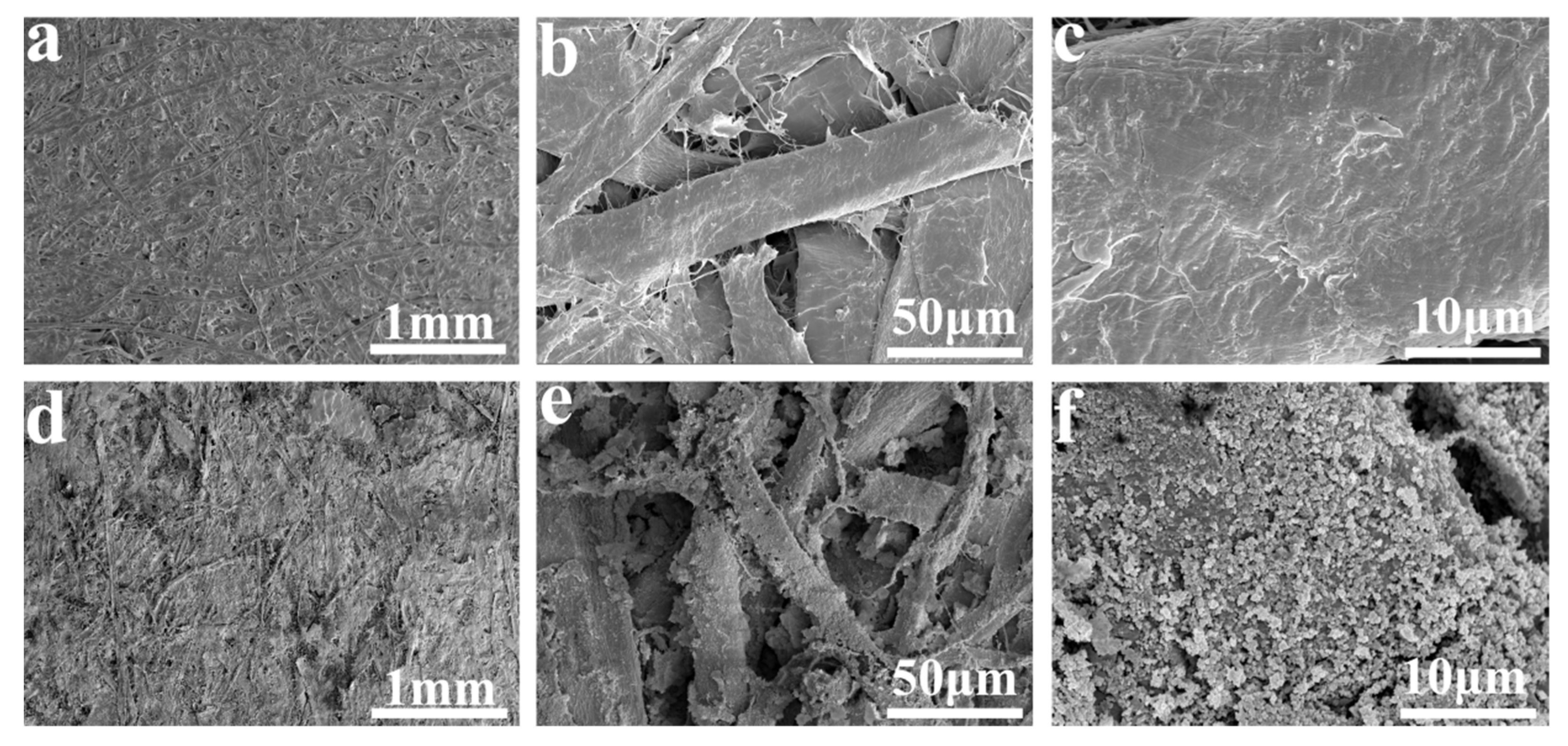

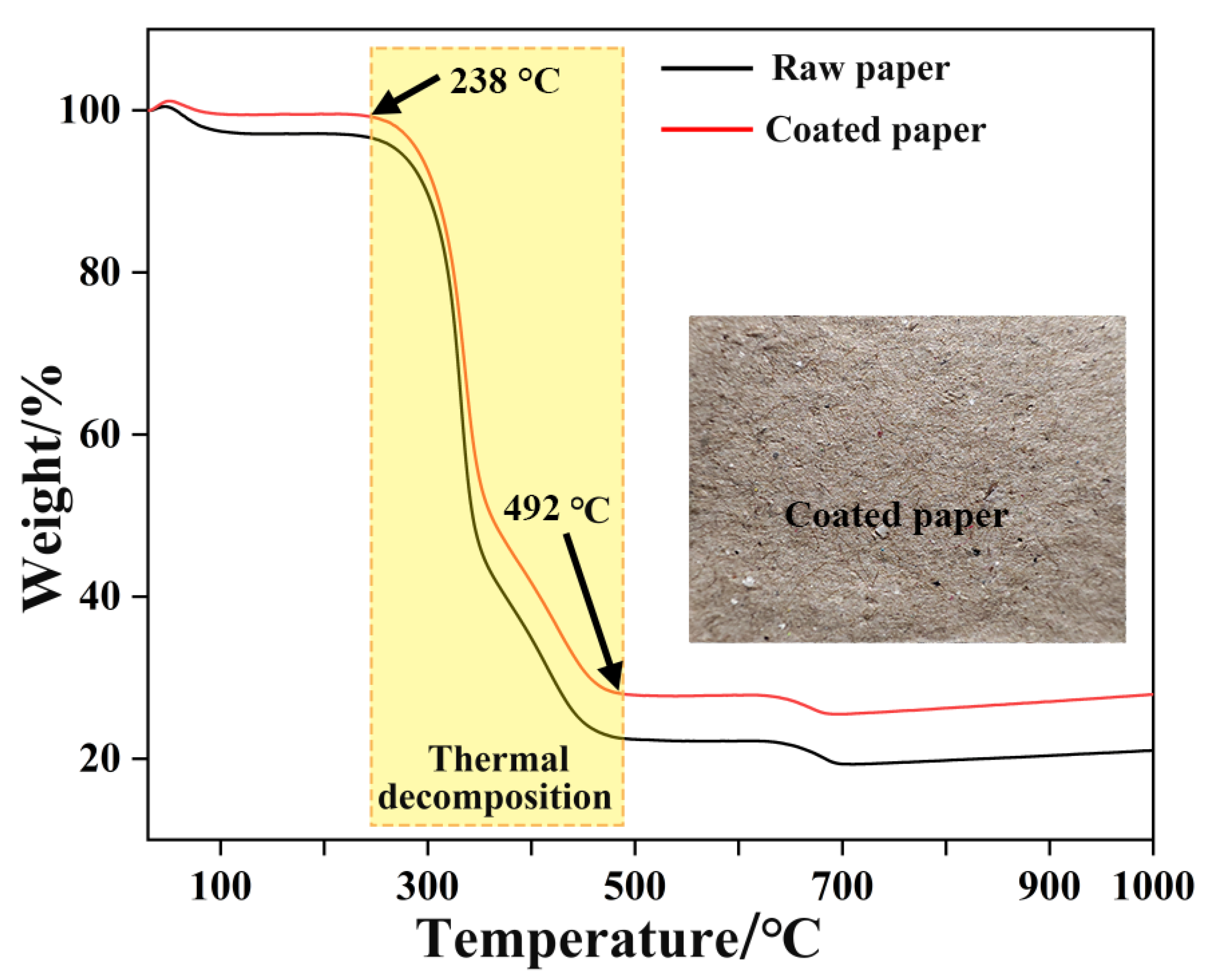
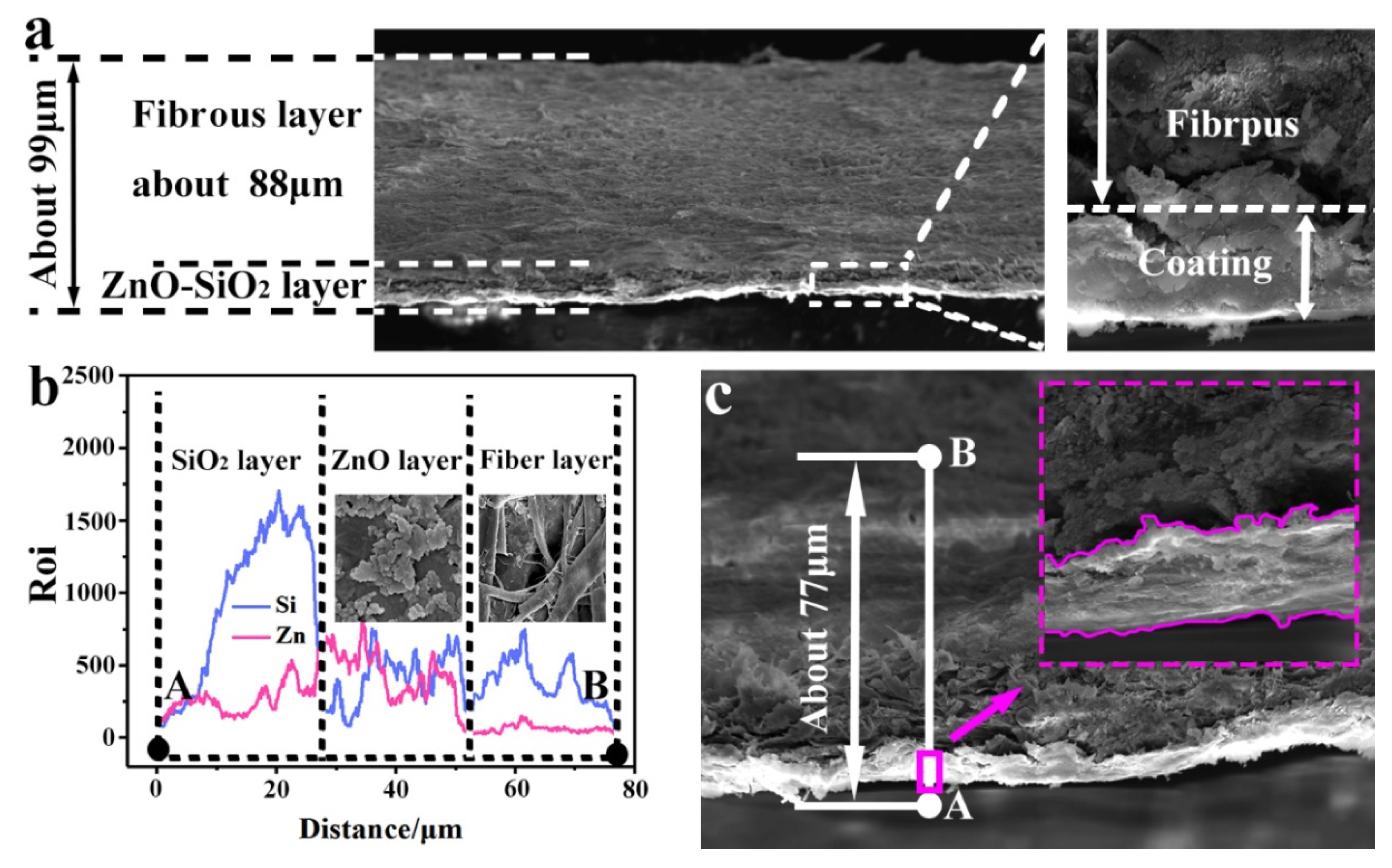
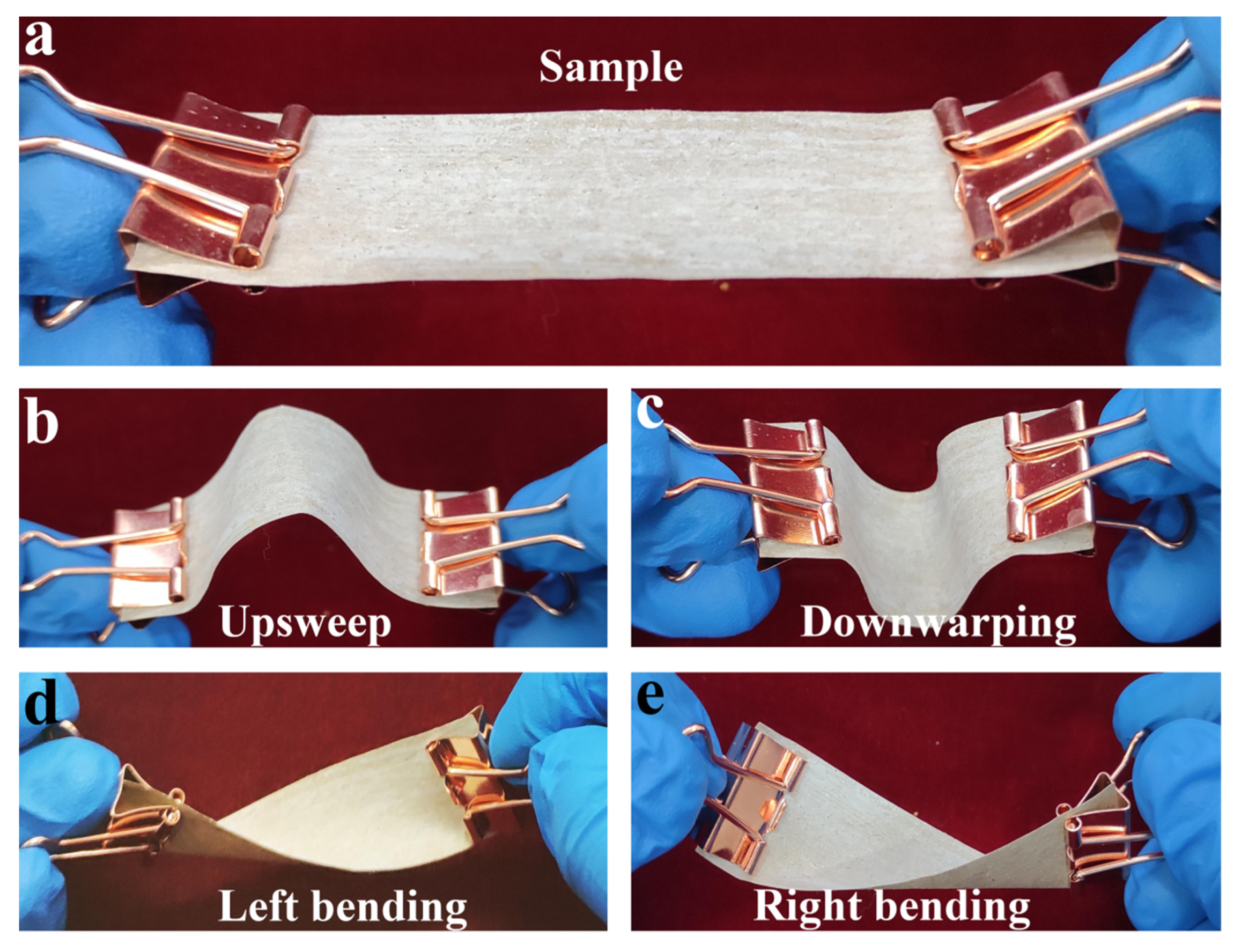
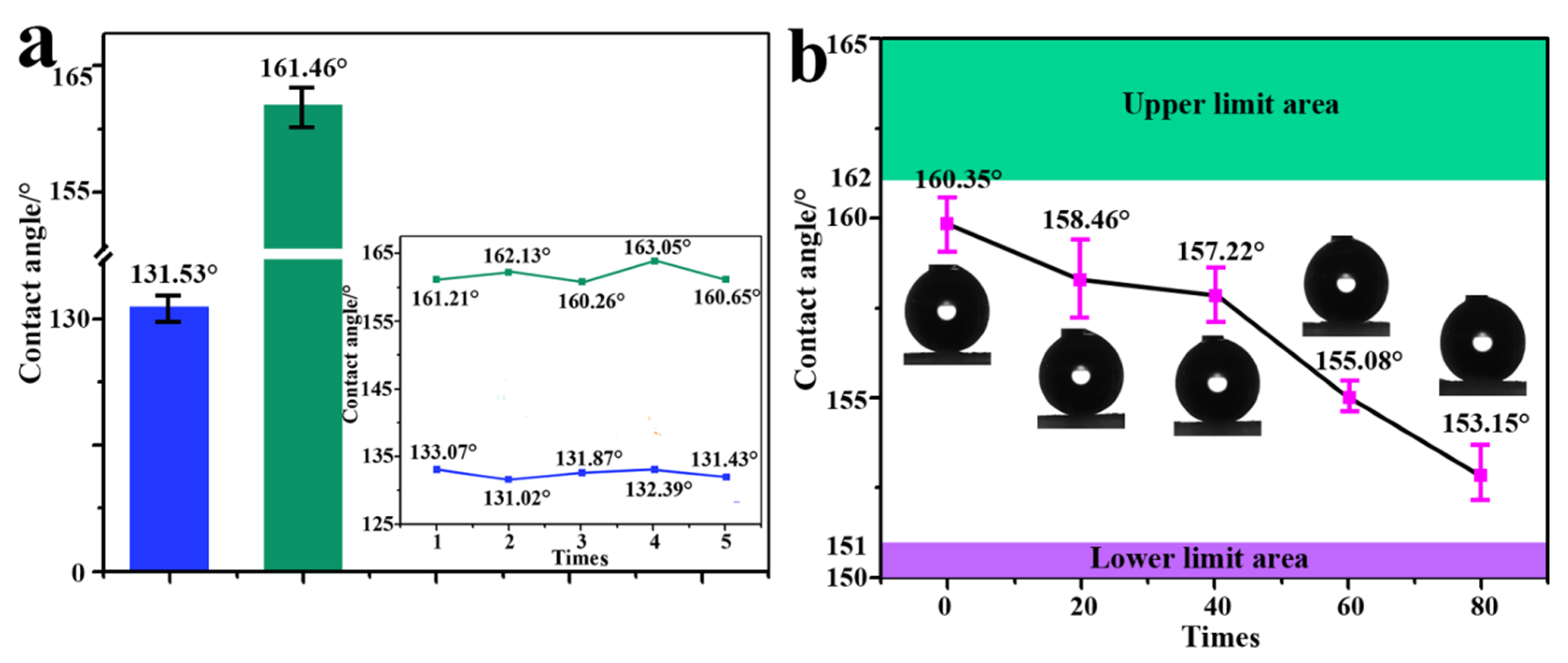



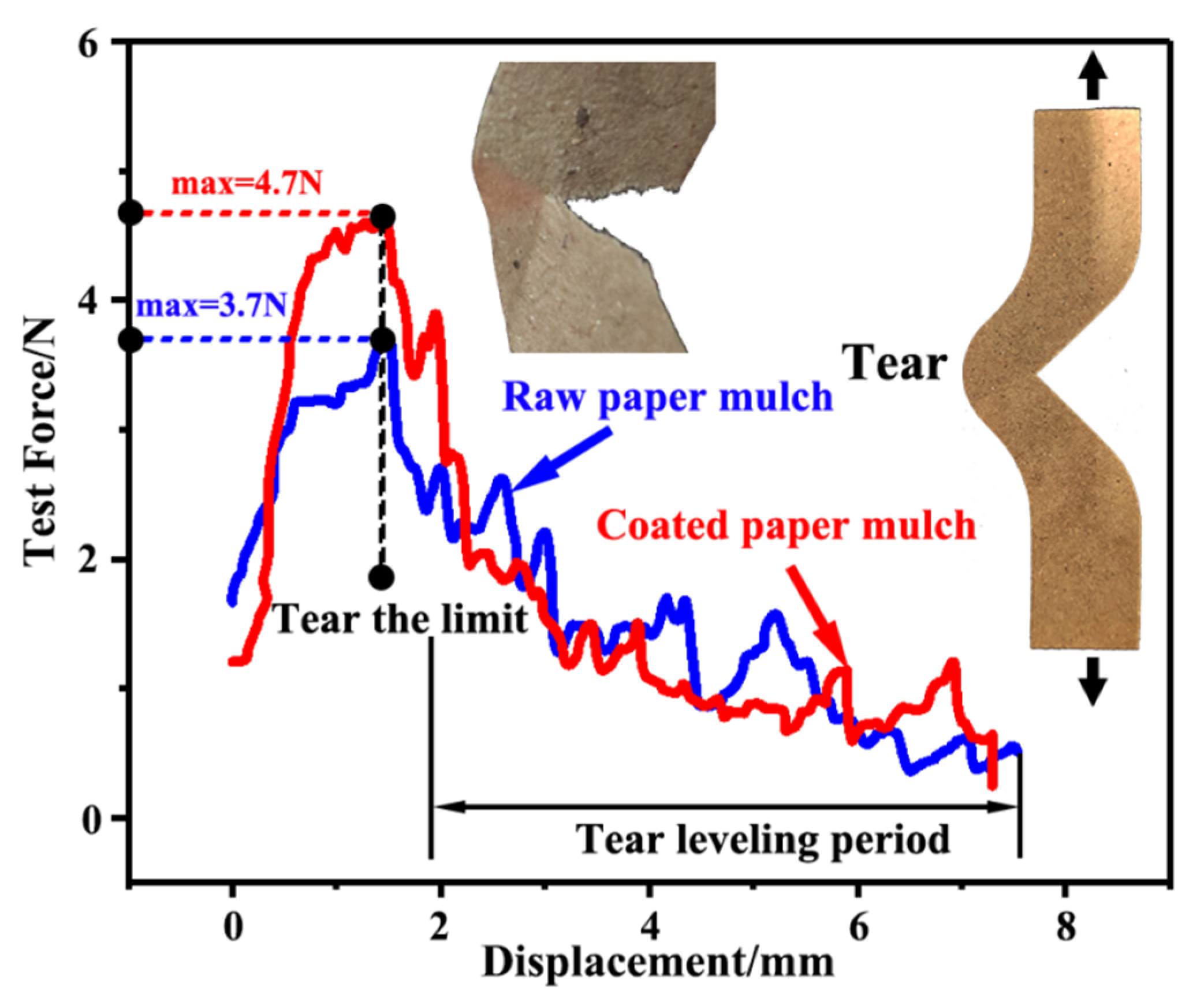
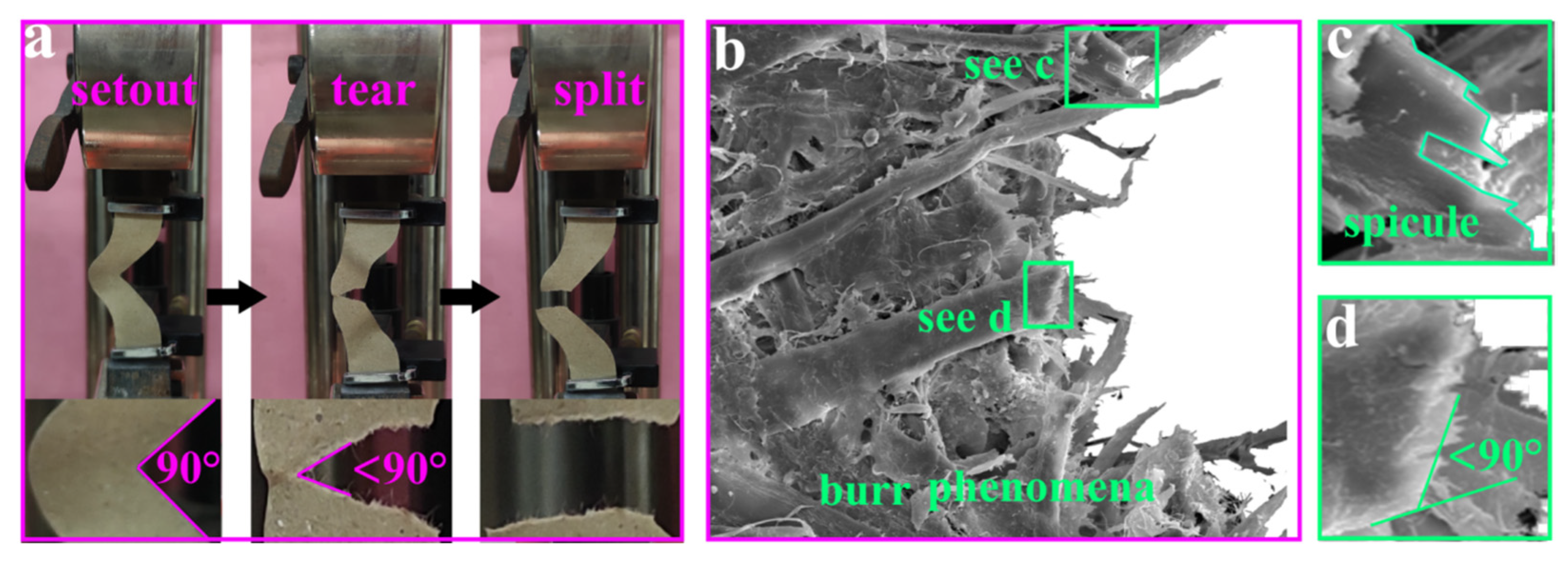
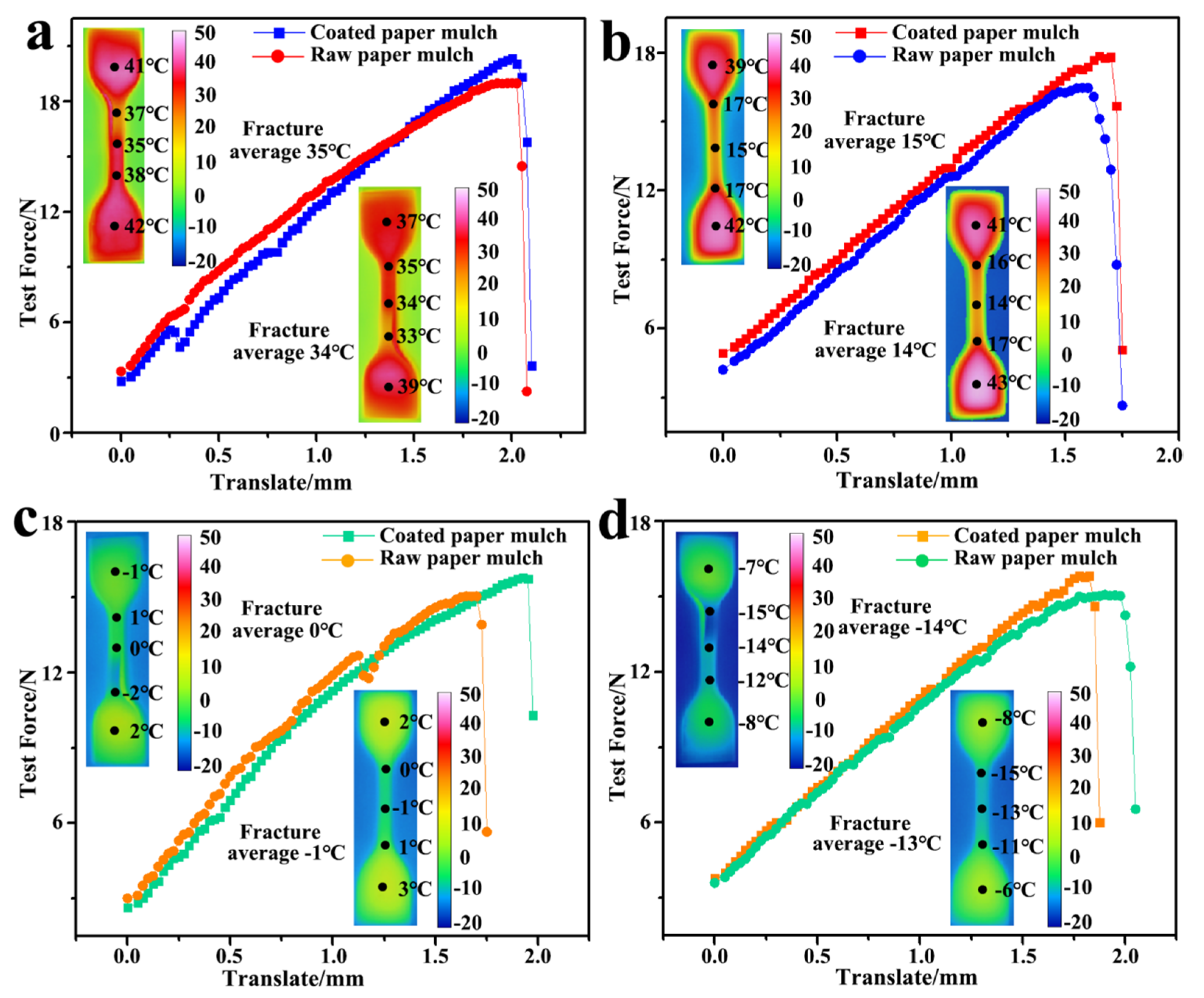

Publisher’s Note: MDPI stays neutral with regard to jurisdictional claims in published maps and institutional affiliations. |
© 2022 by the authors. Licensee MDPI, Basel, Switzerland. This article is an open access article distributed under the terms and conditions of the Creative Commons Attribution (CC BY) license (https://creativecommons.org/licenses/by/4.0/).
Share and Cite
Li, A.; Jia, Y.; Zhang, F.; Zhao, Y.; Zhang, F. The Effects of Zinc Oxide/Silicon Dioxide Composite Coating on Surface Wettability and the Mechanical Properties of Paper Mulching Film. Coatings 2022, 12, 555. https://doi.org/10.3390/coatings12050555
Li A, Jia Y, Zhang F, Zhao Y, Zhang F. The Effects of Zinc Oxide/Silicon Dioxide Composite Coating on Surface Wettability and the Mechanical Properties of Paper Mulching Film. Coatings. 2022; 12(5):555. https://doi.org/10.3390/coatings12050555
Chicago/Turabian StyleLi, Anling, Yangyang Jia, Fangyuan Zhang, Yiming Zhao, and Fengwei Zhang. 2022. "The Effects of Zinc Oxide/Silicon Dioxide Composite Coating on Surface Wettability and the Mechanical Properties of Paper Mulching Film" Coatings 12, no. 5: 555. https://doi.org/10.3390/coatings12050555



